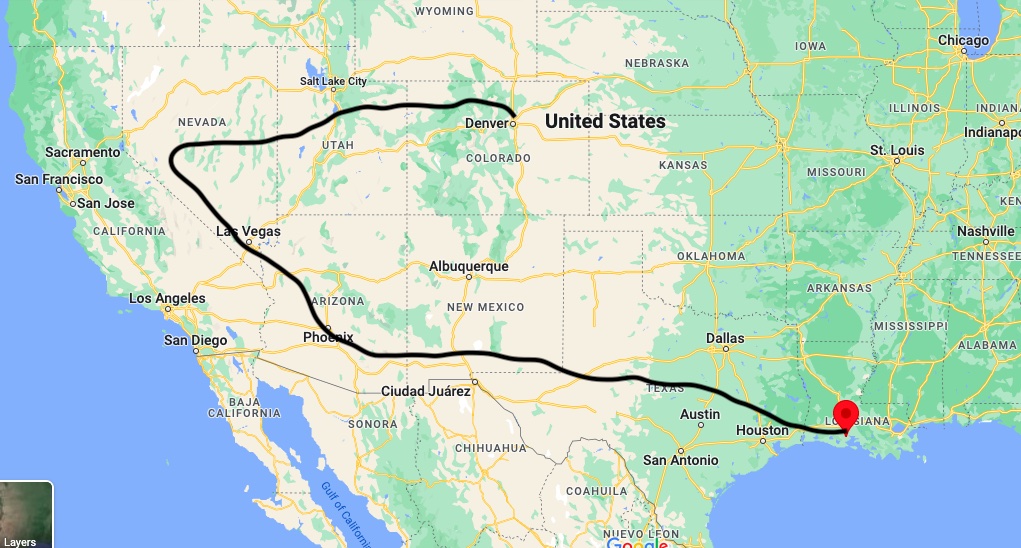Yes, I made it to Louisiana, land of étouffée, jambalaya and gumbo. And water. it is swampy here, quite the change from the desert which has been most of my trip so far.
But let me back up a bit first. I’ve had to stay in hotels more lately due to rain and cold. My 20 year old down sleeping bag finally bit the dust. It has been leaking down for years and one night when it dropped down to 47 deg. I felt cold spots. So I bought a new bag in a sporting goods store that was rated to 40 deg. But next time used it, I was cold again! Dang thing hardly had any material in it and the material fell down and clumped at he sides. So I spent a few uncomfortable nights sleeping in the cold. I eventually had to buy another sleeping bag from REI, a much better one, rated to 20 deg F.
My language classes have also picked up. I started teaching English online through the Italki platform. I was pretty busy this spring and into the summer but after July things really slowed down, which was just as well since i was riding and having to stop to do a lesson is not convenient. But now I have several new students so I am doing sometimes 3 lessons a day. If I have a good cell phone signal I use my phone as a hotspot and can go online and do the lesson at a city park or something but it does not always work. Sometimes I don’t have a signal, sometimes the wind affects the sound quality and one time it started raining on me so I had to cancel the lesson. So getting a hotel just makes it easier to do the lessons. Plus it’s just more comfortable and I avoid the stress of having to find a campsite. Here is a screenshot of my schedule as of Nov. 7.
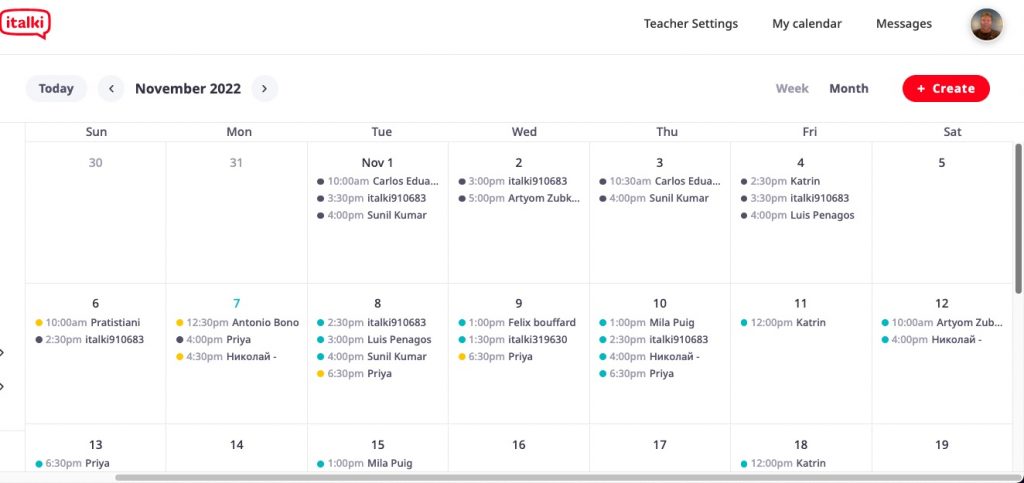
One day I passed by a number of elderly riders on a cross-country tour. They ride at their own pace and meet up at a designated spot at the end of the day. A van carries most of their gear. It has its advantages I guess but it’s not for me. I hate being on a schedule when I am touring. Plus it is expensive because you have to pay for two guides. But the people were friendly. They started from San Diego and were going to St Augustine in Florida. They typically ride 60 miles a day and camp at RV parks. Not bad! Here is Sue, one of the people I chatted with.
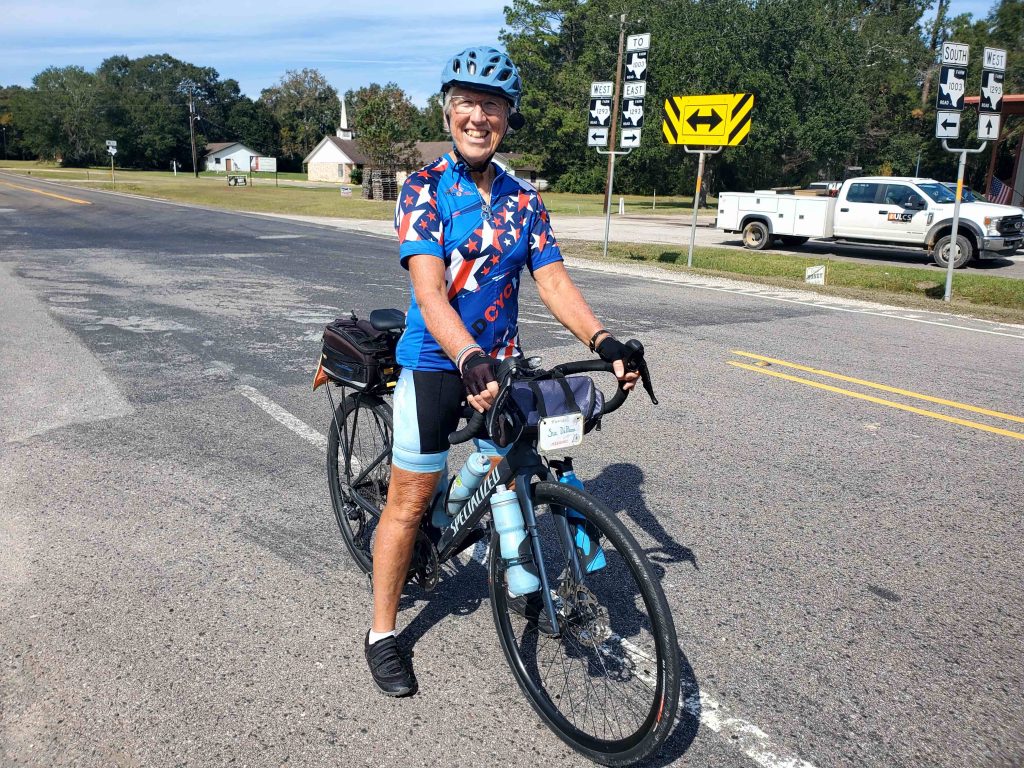
One of my cold campsites, east Texas. Camping has been easier lately due to less pasture and cropland and more forests. The thick brush allows me to get out of sight of the road, even if it is only 30 yards away.
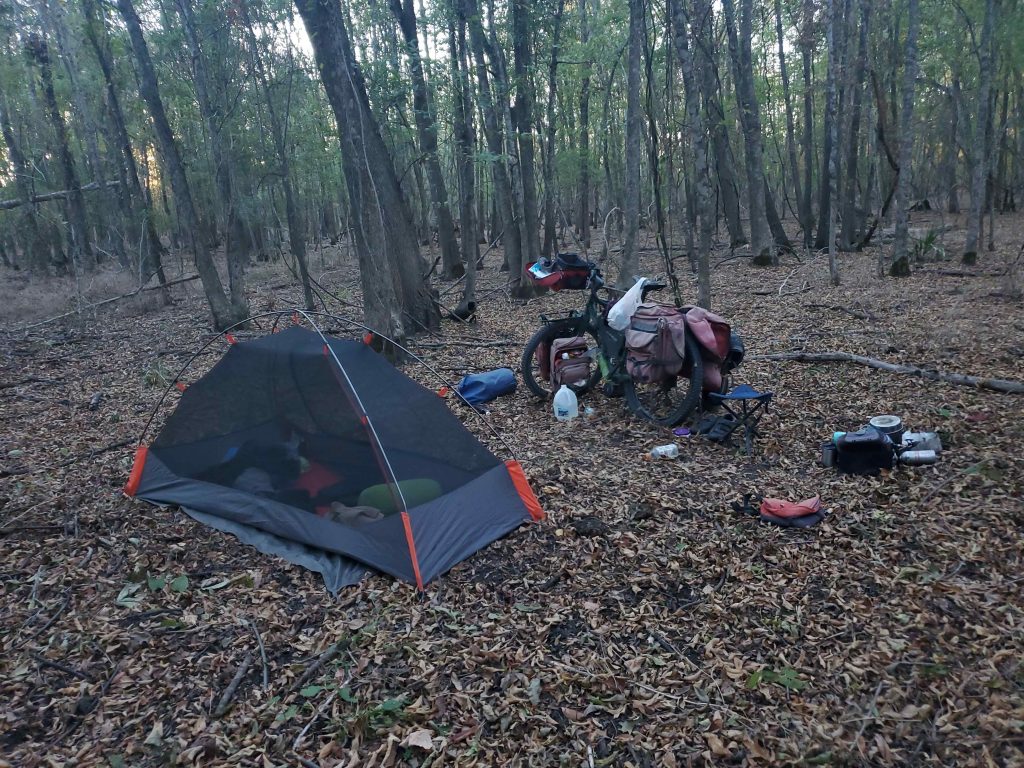
Sign, east Texas.
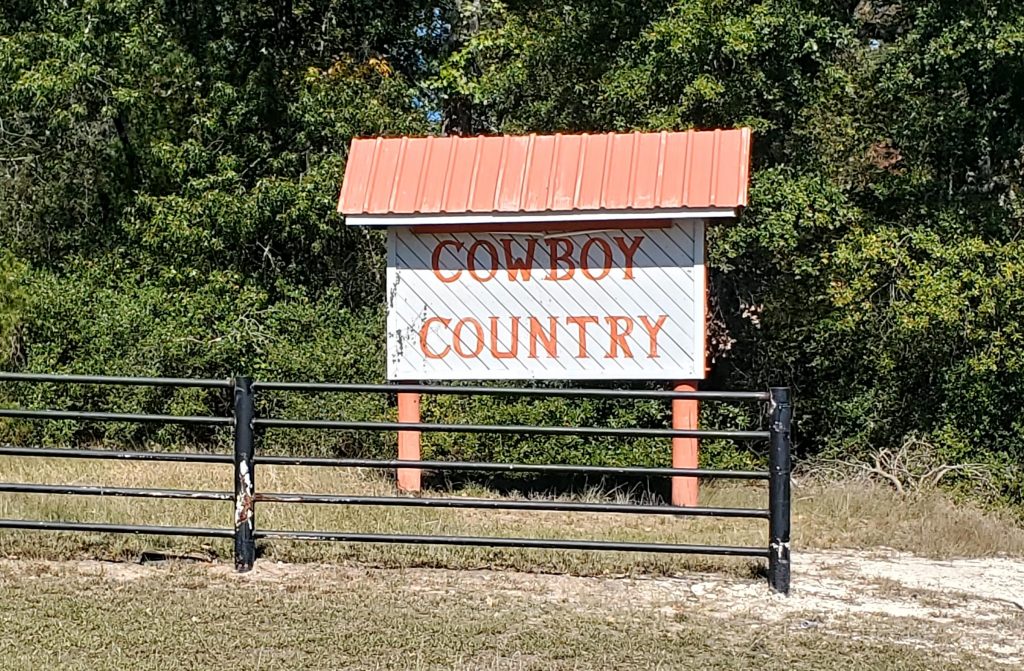
I heard about a new movie, All Quiet on the Western Front. I have been fascinated by WW1 for many years and have watched videos and listened to podcasts. Dan Carlin’s Blueprint for Armageddon is superb. This film, from a German perspective, captures the horror and brutality of life in the trenches. It really was Hell on earth for those poor guys. What drives me crazy is the waste of it all. Millions died for nothing. The whole war was pointless and completely avoidable. If you want a dose of reality check out this film. It’s grim though, not a first date movie. Here is the trailer.
Louisiana
I had a difficult crossing into Louisiana. There was really only one feasible bridge across the Sabine river which separates Texas and Louisiana, the I10 highway, which was under construction. Due to the work, there was no shoulder which usually allows cyclists to ride on the highway in relative safety. Without the shoulder you are sharing the highway with thousands of trucks roaring by at 75 mph. This is super dangerous. So I had to get off the highway and try to find another way. There was no other bridge but there was a little concrete walkway next to the highway on which I was able to walk my bike. I had to drag it though mud for a bit but I got over this little creek. That truck on the left is zooming by at 75 mph, causing enough draft to almost knock me over into the water. riding on the highway on the other side of that concrete barrier would have been suicidal.
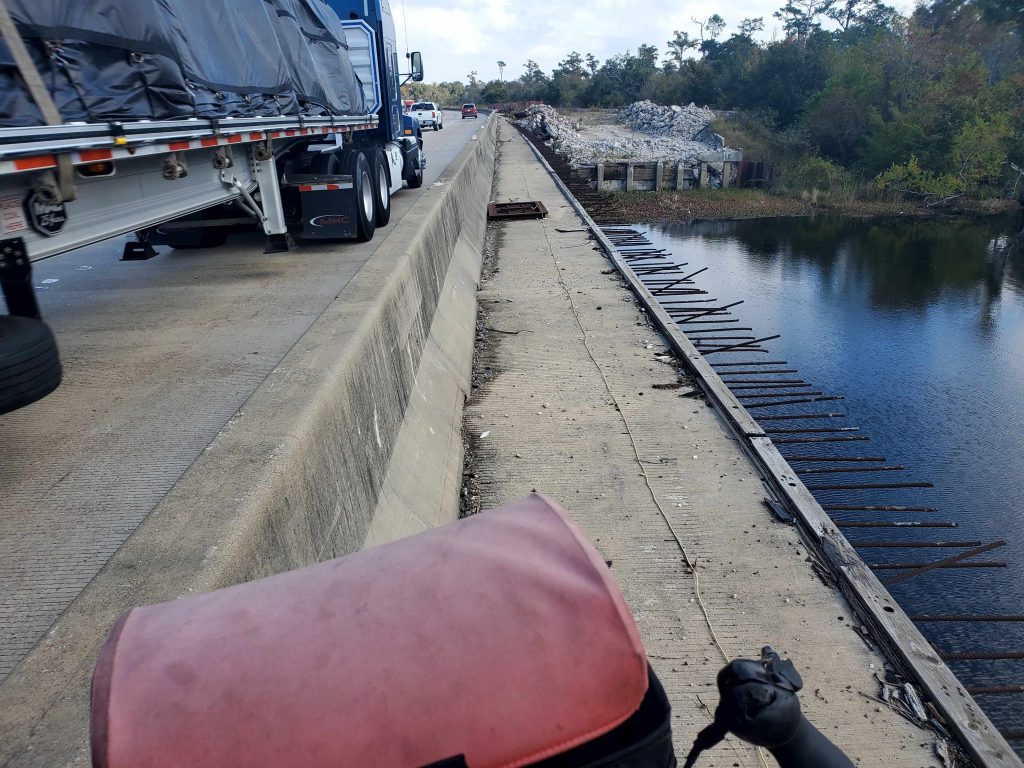
Later I had to share a very narrow shoulder for a couple hundred yards with the traffic and I really thought I was going to get hit. Trucks were passing within inches of my left panniers and the drafts and noise were unnerving. I’ve ridden in traffic a lot in my career but I was seriously afraid there for about five minutes. I did mange to escape the highway and get back on normal roads but I was a bit shaken. No photos of that. My electric motor helped too. I cranked up the pedal assist to 5 which pushed me along at 17 mph to get through the danger quickly.
Cajun Country
The Cajuns are descendants of Roman Catholic French Canadians who the British drove from the captured French colony of Acadia (now Nova Scotia and adjacent areas) in the 18th century. They settled in the fertile bayou lands of southern Louisiana. The Cajuns today form small, compact, generally self-contained communities. Their patois is a combination of archaic French forms with idioms taken from their English, Spanish, German, American Indian, and African American (usually “Creole”) neighbors. Cajun separateness, though often their own preference, was also the result of the prejudice against them.
Cajun cuisine reflects the mixture of cultures in Louisiana. Among its classic dishes are alligator stew, jambalaya, gumbo–made with a roux—and crayfish (or other seafood) étouffée, served over rice. Many dishes are prepared with some variety of sausage, such as boudin or andouille (a smoked sausage made with pork), and tasso (a pork shoulder preparation borrowed from the Choctaw). Essential seasonings include filé powder (made from sassafras leaves), cumin, coriander, smoked paprika, cayenne pepper, and red pepper flakes.
Cajun music likewise shows a blend of several influences, including French, Creole, and Celtic songs. Cajun songs are usually sung in French. Typical ensemble instruments are the fiddle, the diatonic (button) accordion, the guitar, and spoons or the triangle. Tempos can range from a mournful waltz to a lively two-step, but, whatever the tempo, Cajun music is meant to be danced to. Scholars and aficionados distinguish Cajun music from zydeco, which is a development of older Creole styles and black popular music.
West to East
I am finally I would say, not in the west. Since I started this trip four months ago I have been in mountains and desert. Now in Louisiana, I am feeling the humidity and enjoying no mountains. For one of the few times on the trip the roads are gloriously flat.
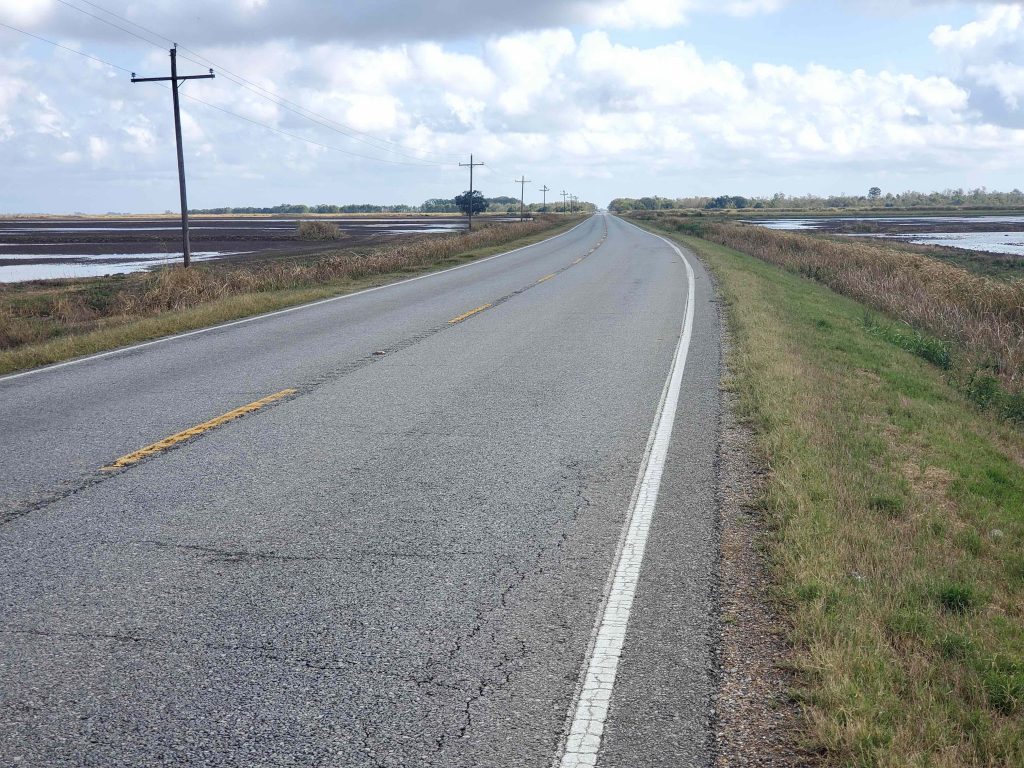
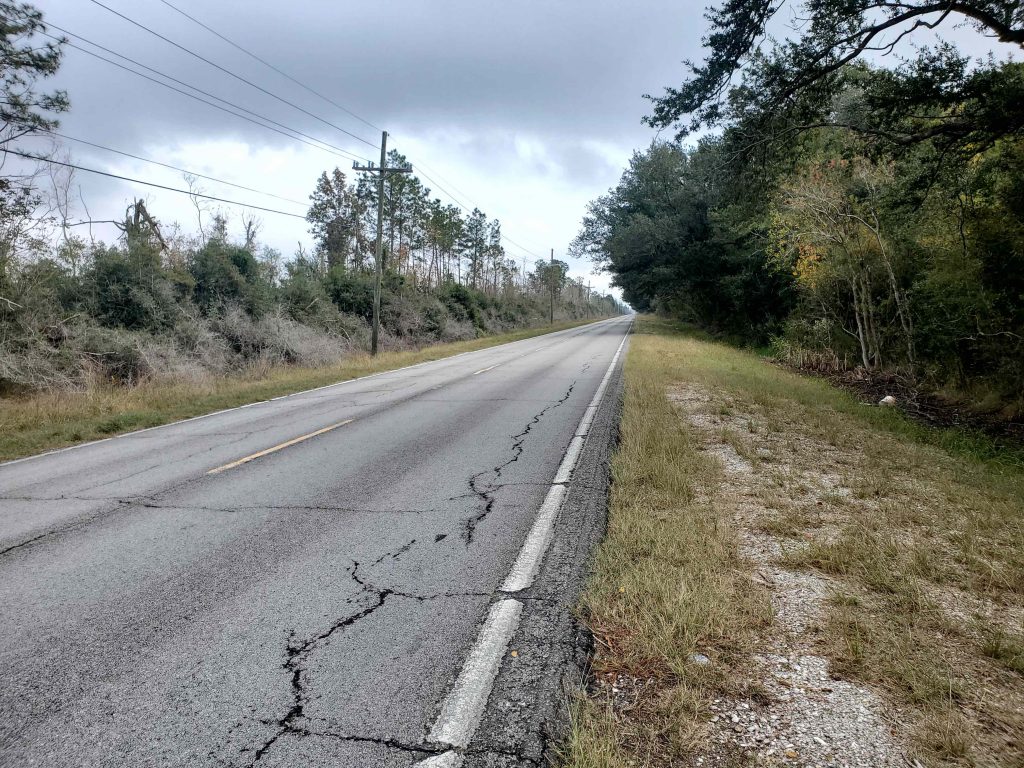
Crossing over the I10 highway.

But the land is wet and swampy here. The fields are just saturated with water. I can’t see how anything grows there, or how they run their tractors in the mud.
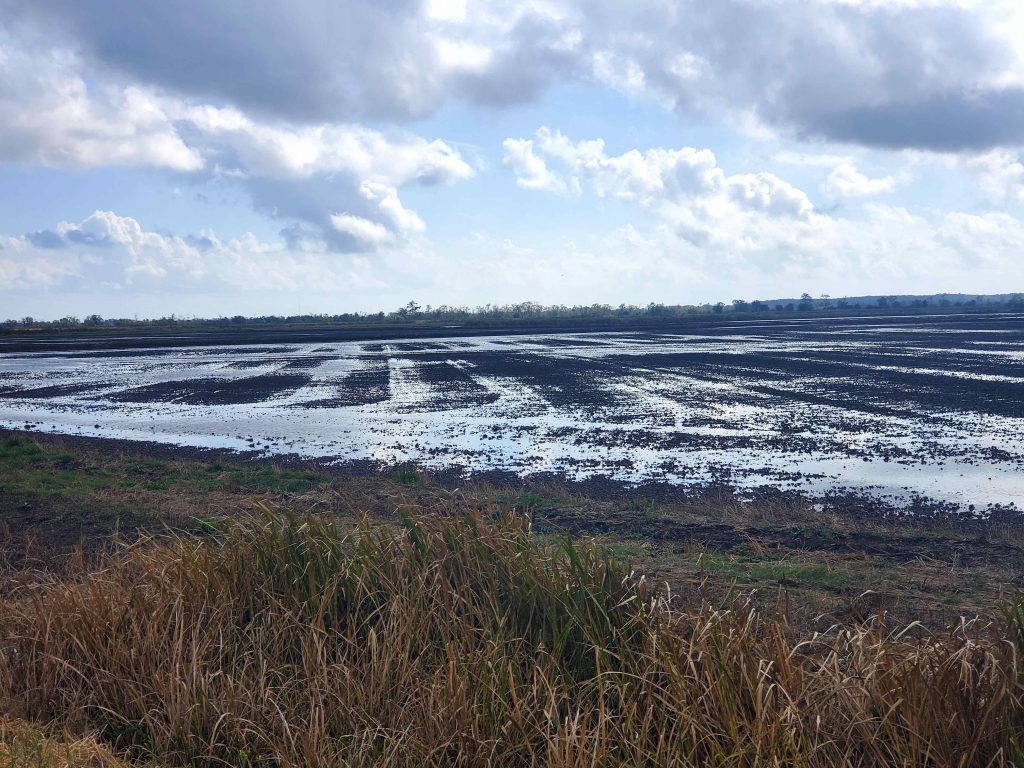
One of the many canals and rivers that I crossed. I even saw some alligators in one.
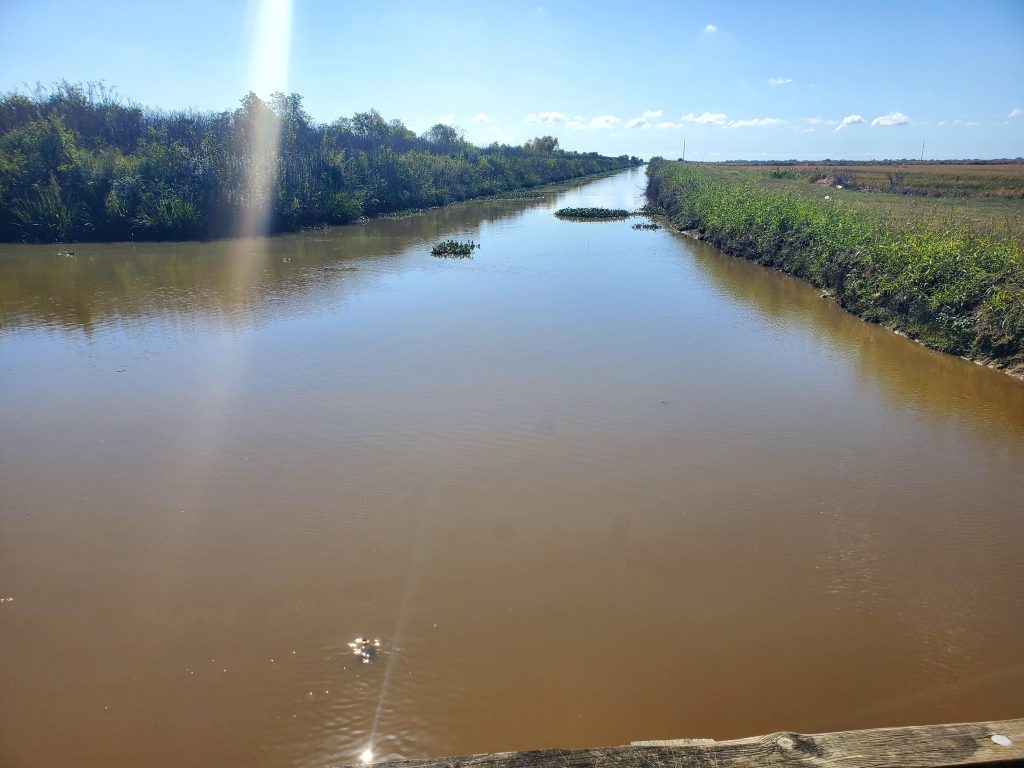
Crawfish restaurant.
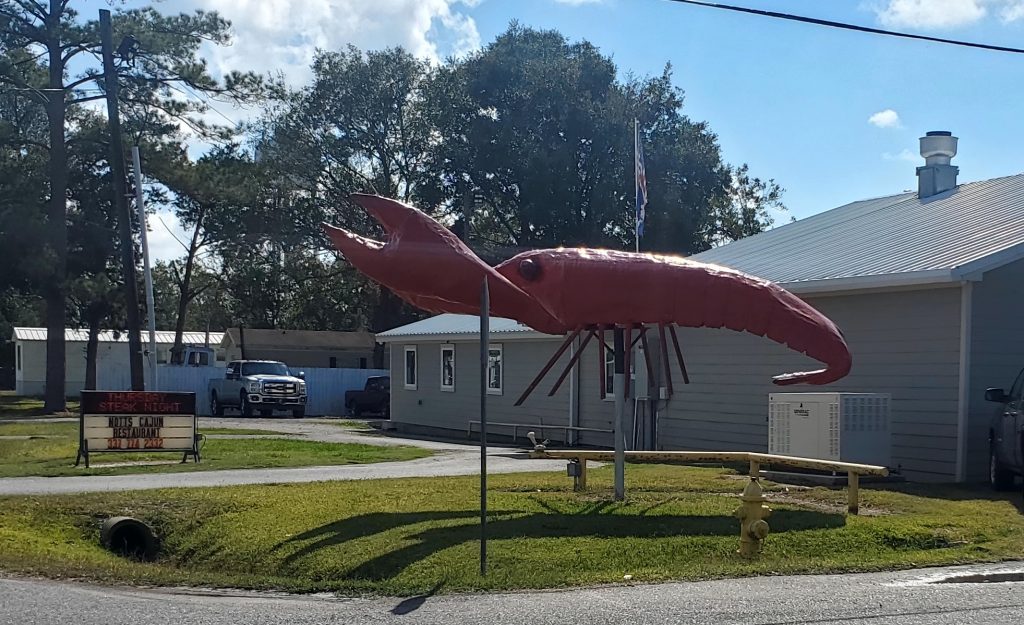
There’s evidently no HOA around here. Many houses have junk piled up all around them.
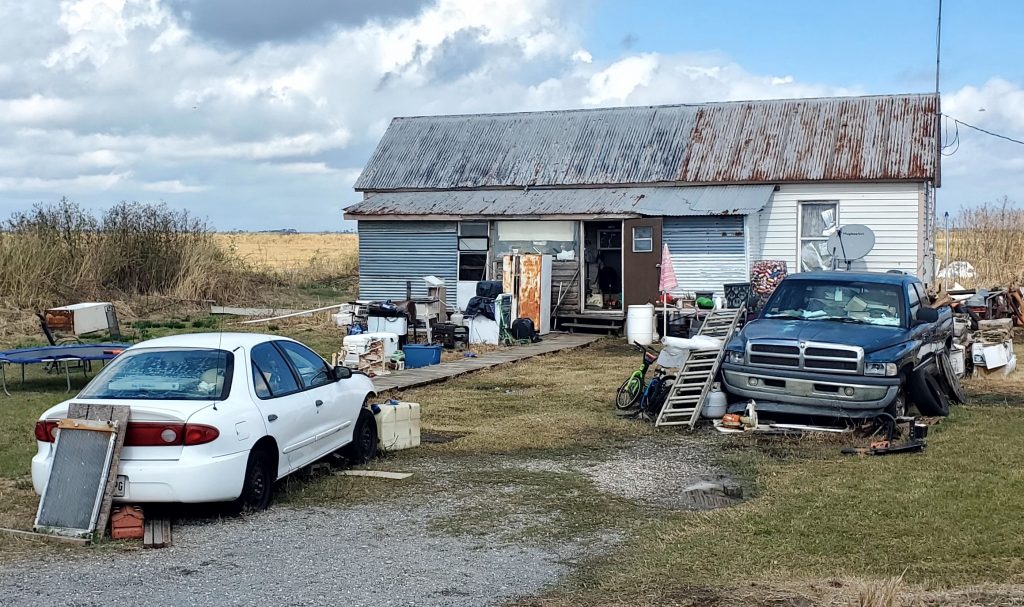
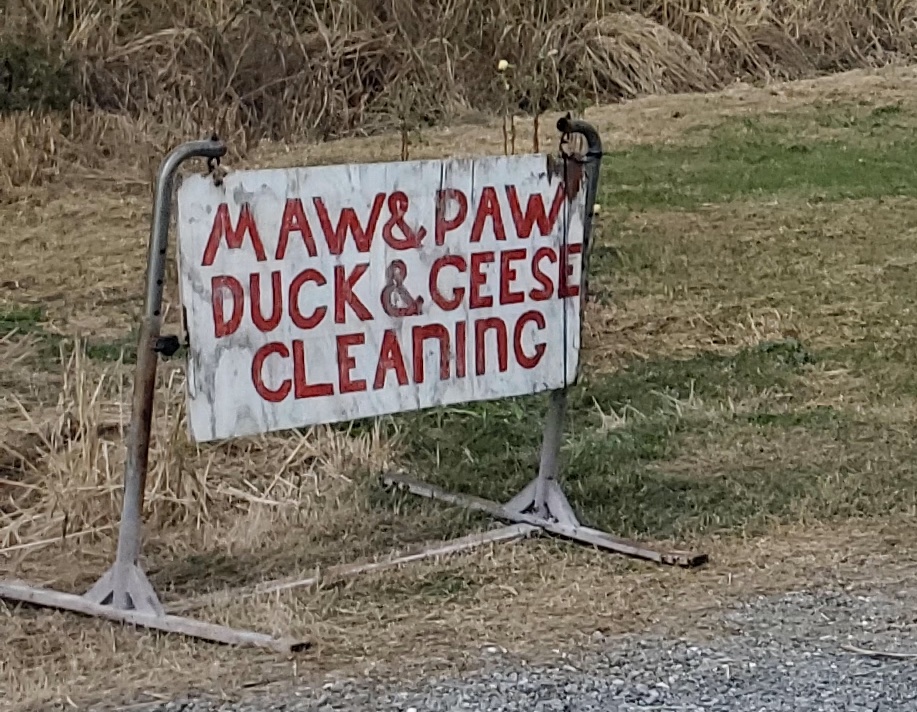
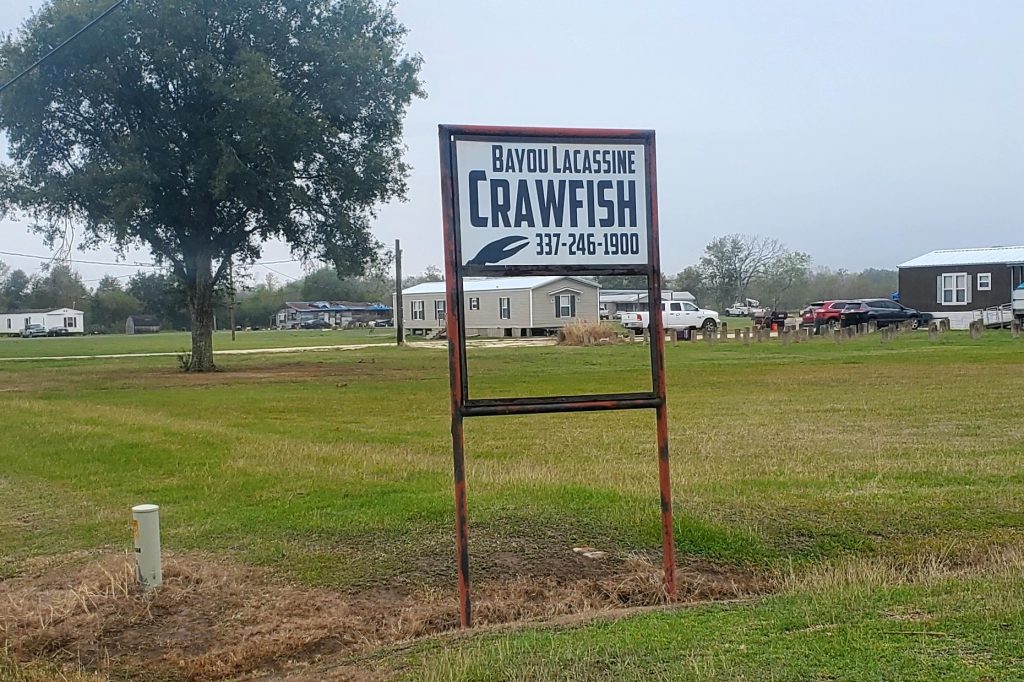
This couple saw me and asked about my trip. Then they gave me $20! Nice people here.
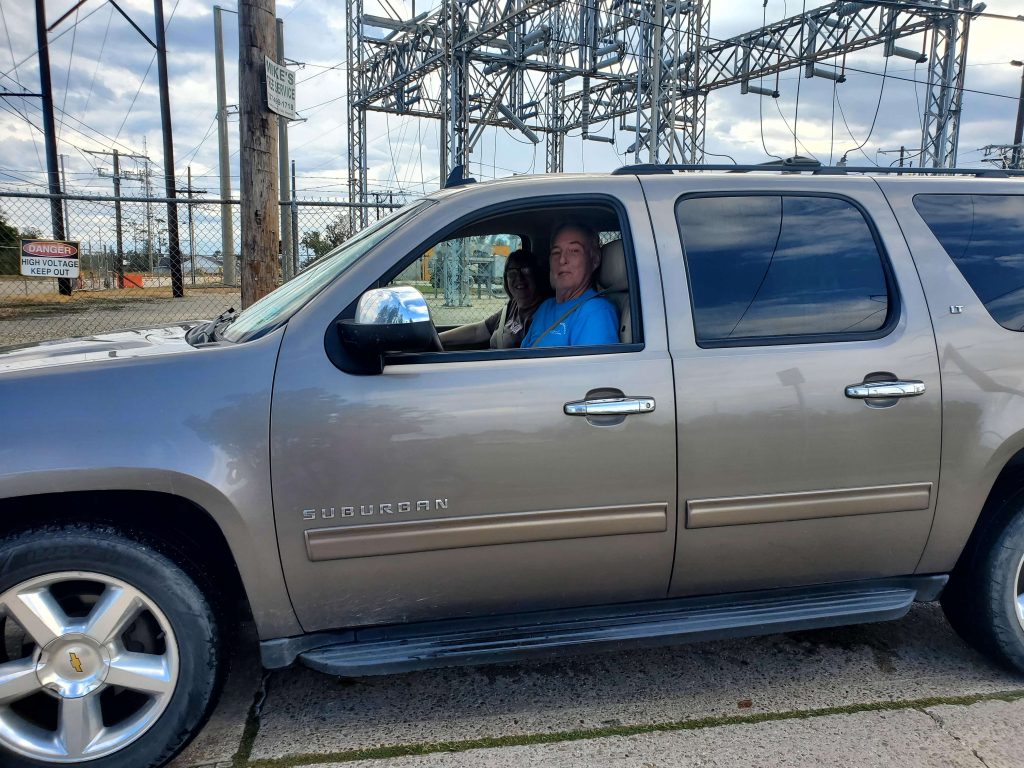
What Is Boudin?
Boudin (pronounced “BOO-dan,”) is a cooked sausage made from pork meat and rice, plus various vegetables and seasonings, all stuffed in a natural pork casing.
Traditional boudin features pork liver and/or pork heart along with scraps of pork meat from just about any part of the hog. The meat is first simmered, and then drained and ground up. The ground meat is heavily seasoned and combined with vegetables such as onions, celery and bell peppers, plus cooked rice, to produce the filling, which just happens to be, essentially, a dish known as pork dirty rice.
The next step is to take the cooked dirty rice and stuff it into a natural pork sausage casing (made from pig’s intestine), then twist it into links and cook it, either by steaming, simmering, smoking or grilling.
Note that unlike many sausages, where uncooked meat is stuffed into a casing, boudin is made from cooked meat. That means curing isn’t necessary—although some recipes for homemade boudin do call for curing salt.
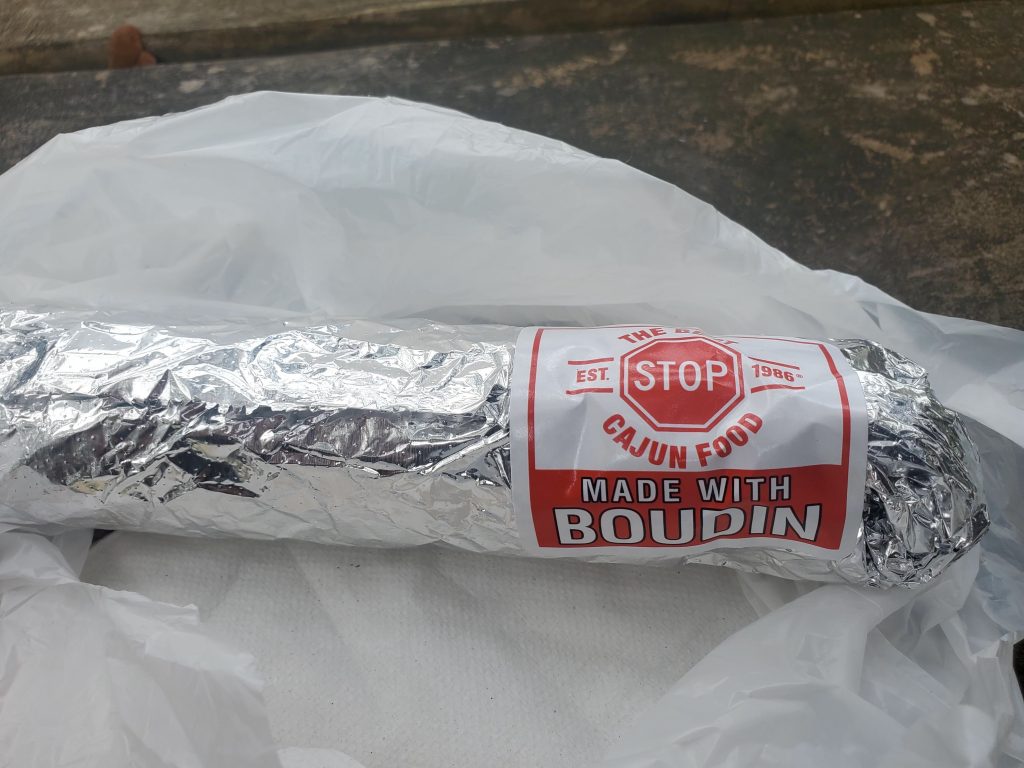
Here I am chowing down on my boudin.

I made my way to Abbeville and stayed a couple days at my niece Eva’s place with her three dogs. I’m usually pretty good with animals but two of the dogs never took to me.
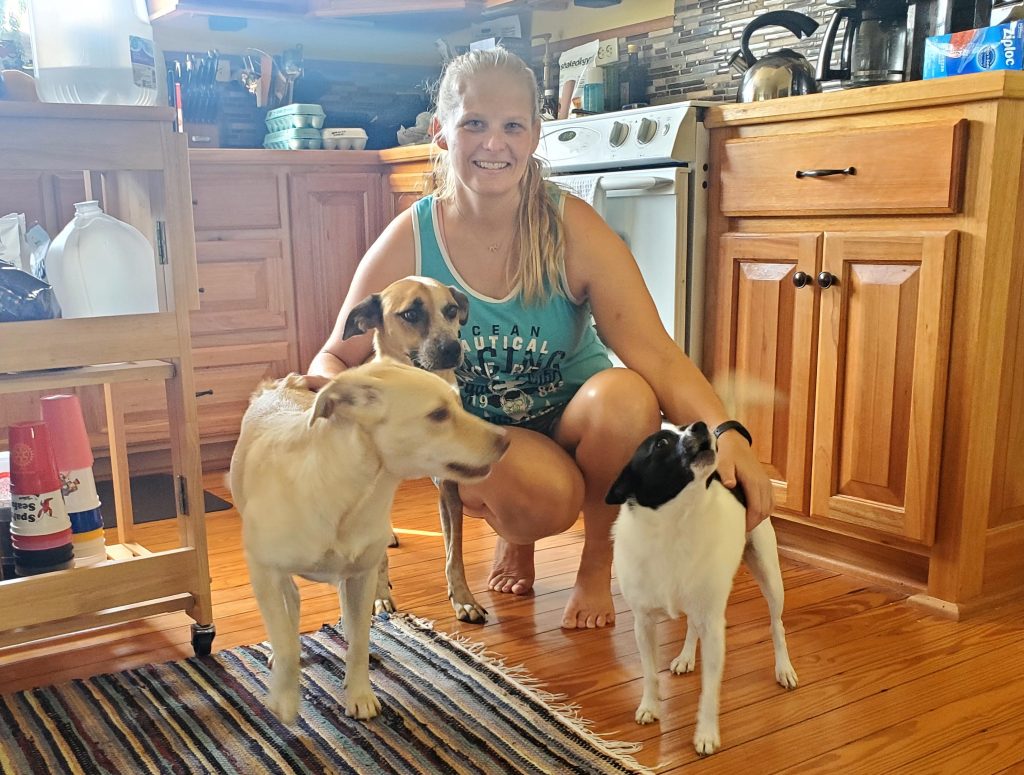
Eva works for the Fisheries and Wildlife department helping to build up the whooping crane population, which is an endangered species. Sometimes she has to dress up in a crane costume and pretend to be a crane. Either that or she’s going to a Halloween party.
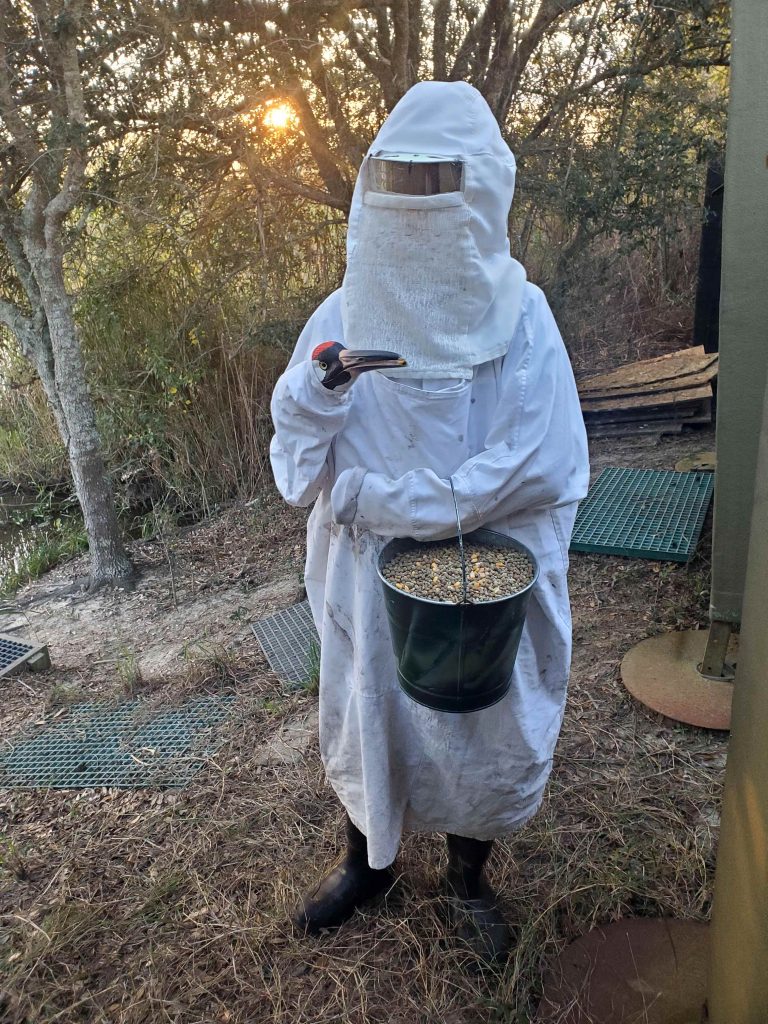
Here she is taking notes in a blind where she can observe the cranes without disturbing them.
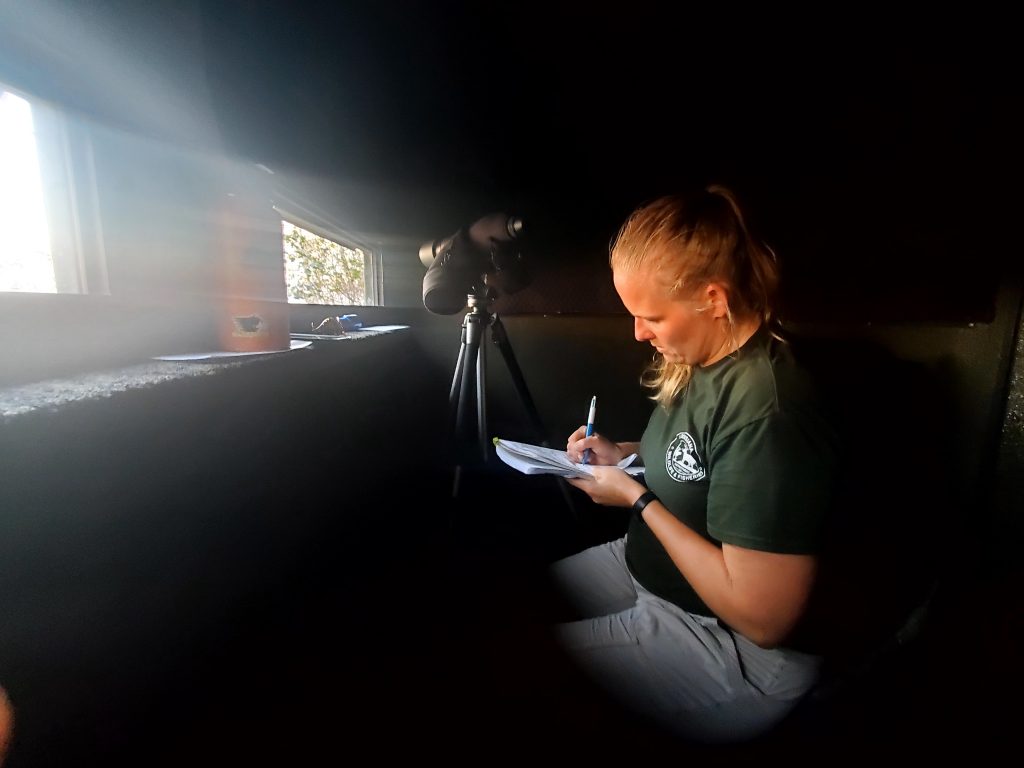
A local resident at the blind building a web.
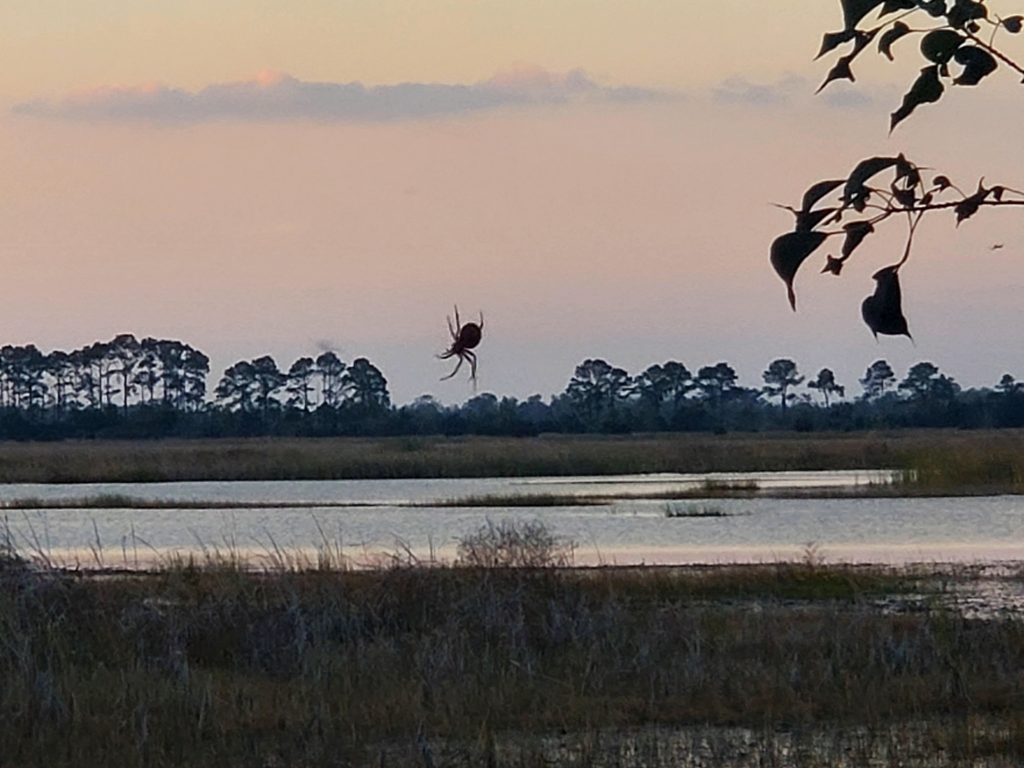
That’s it for now. Here is my current location near Abbeville, Louisiana.
